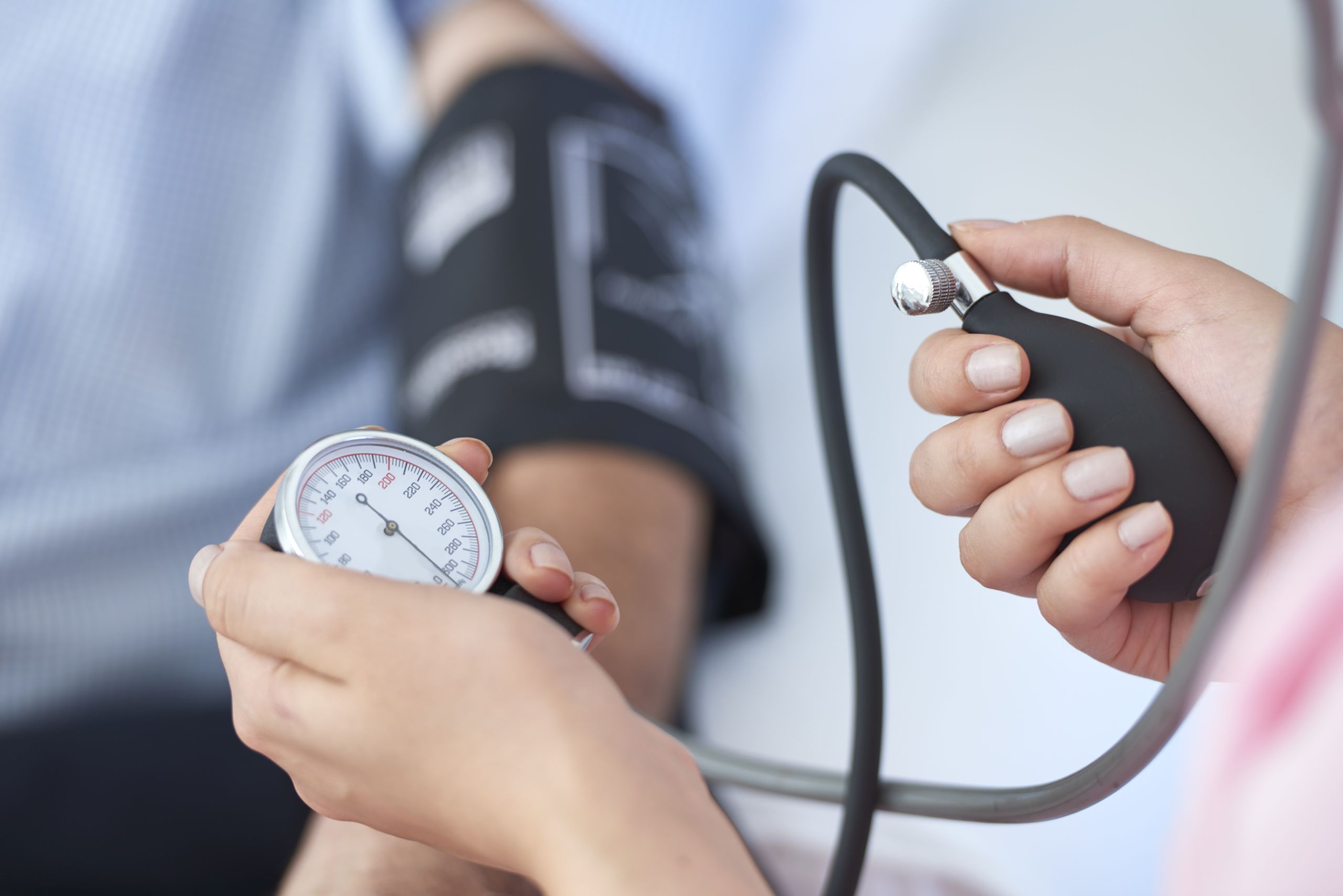CVD prevention: detecting and treating hypertension
How NICE resources can support local priorities

Making the case for action
Around 5.5 million people in England have undiagnosed high blood pressure (hypertension) – a usually symptomless condition that substantially increases the risk of stroke, heart attack and dementia. Treatment reduces risk, but under-treatment is common among those who are diagnosed.
Recent analysis from NHS England and Public Health England (PHE) shows that optimal treatment for everyone with diagnosed high blood pressure could avert up to 9,710 heart attacks and 14,500 strokes, saving up to £274 million.
Most local partnerships identified preventing cardiovascular disease (CVD) as a priority in their plans. By working across larger populations, they can drive larger-scale improvements such as increasing access to blood pressure testing in the workplace, and working with local authorities and the third sector to provide NHS health checks in community settings.
The NHS Long Term Plan includes an ambition to prevent 150,000 strokes, heart attacks and dementia cases over the next 10 years by improving the detection and treatment of atrial fibrillation, hypertension and high cholesterol. To support this, a coalition led by Public Health England has agreed specific ambitions for detecting and managing these high-risk conditions (see Health matters: preventing cardiovascular disease).
The ambitions for hypertension are that by 2029:
- 80% of the expected number of people with hypertension are diagnosed.
- 80% of the total number of people diagnosed with hypertension receive treatment, according to the target in NICE guidelines.
We've published guidance and quality standards on hypertension, and tools to help with putting it into practice. Our guidance is aligned with the NHS England RightCare and Public Health England cardiovascular disease (CVD) prevention pathway and will support delivery of the national ambitions for blood pressure.
Use data about your area
Reviewing data on what’s happening in your area helps you compare how you're doing with other areas, and make decisions on how to improve care. These resources provide data related to CVD prevention, including hypertension:
- CVD Intelligence Packs aim to provide information for the CVD prevention project. The CVD prevention programme set 10 year ambitions focussing on the three CVD risk factors, hypertension, atrial fibrillation and dyslipidaemia.
- PHE’s cardiovascular disease profiles for each CCG cover coronary heart disease, diabetes, kidney disease and stroke.
- NHS RightCare's ‘where to look’ packs include headline opportunities, improvement opportunity tables and pathways on a page showing how CCGs in your differ from your peers.
- NHS health checks fact sheets and CVD prevention ‘size of the prize’ infographics estimate the potential impact of improving health checks uptake and CVD prevention in your area.

Finding the right information

Our guidance to help you with detecting and treating hypertension
Our guidance sets the standards for high-quality healthcare and encourages healthy living.
It can be used by the NHS, local authorities, employers, voluntary groups and anyone else involved in delivering care or promoting wellbeing.
The easiest way of finding all our guidance on hypertension is to go to our topic page on hypertension.
Our NICE Pathway on hypertension is an interactive flowchart that shows how everything we've published fits together.
Our quality standard on hypertension includes quality statements that describe high-quality care in priority areas for improvement. See how to use quality standards for more information.
Other key hypertension guidance
Medical technologies guidance: WatchBP Home A for opportunistically detecting atrial fibrillation during diagnosis and monitoring of hypertension.
Support for improving quality

We publish a range of tools and resources to help with putting our guidance and quality standards into practice. You can find these on the tools and resources tab for each piece of guidance or standard.
Tools for hypertension include:
- a visual summary
- a baseline assessment tool for services to check if practice is in line with our guideline
- clinical case scenarios to support training
- how do I control my blood pressure? Lifestyle options and choice of medicines patient decision aid
- a list of shared learning case studies showing how organisations have used our guidance and standards to improve the quality of services around the UK.
Our impact report on CVD prevention highlights the progress made by the healthcare system by implementing our guidance.
NICE indicators
We’ve developed a set of outcome indicators for hypertension. Visit our standards and indicators page to see the indicators for hypertension.
Indicators can be particularly useful to local partnerships when:
- creating local performance dashboards
- benchmarking performance against national data
- developing local quality improvement schemes
- measuring progress that local health systems are making on outcomes.
Hypertension indicators pack
NHS Digital has designed specifications and business rules to support electronic data extraction from clinical IT systems on our hypertension indicators in a similar way to indicators used in the quality and outcomes framework (QOF). For a quick summary, go to the indicators tab on the standards and indicators page, and click on the link for the hypertension indicator pack on the right of the screen. To receive a full pack containing all the specifications and business rules to support electronic data extraction, email indicators@nice.org.uk.
The Cheshire and Merseyside public health collaborative is using the pack to support local quality improvement work through the development and application of a general practice quality improvement package. The package includes consultation templates, protocol, patient information and a dashboard of indicators to track progress.



